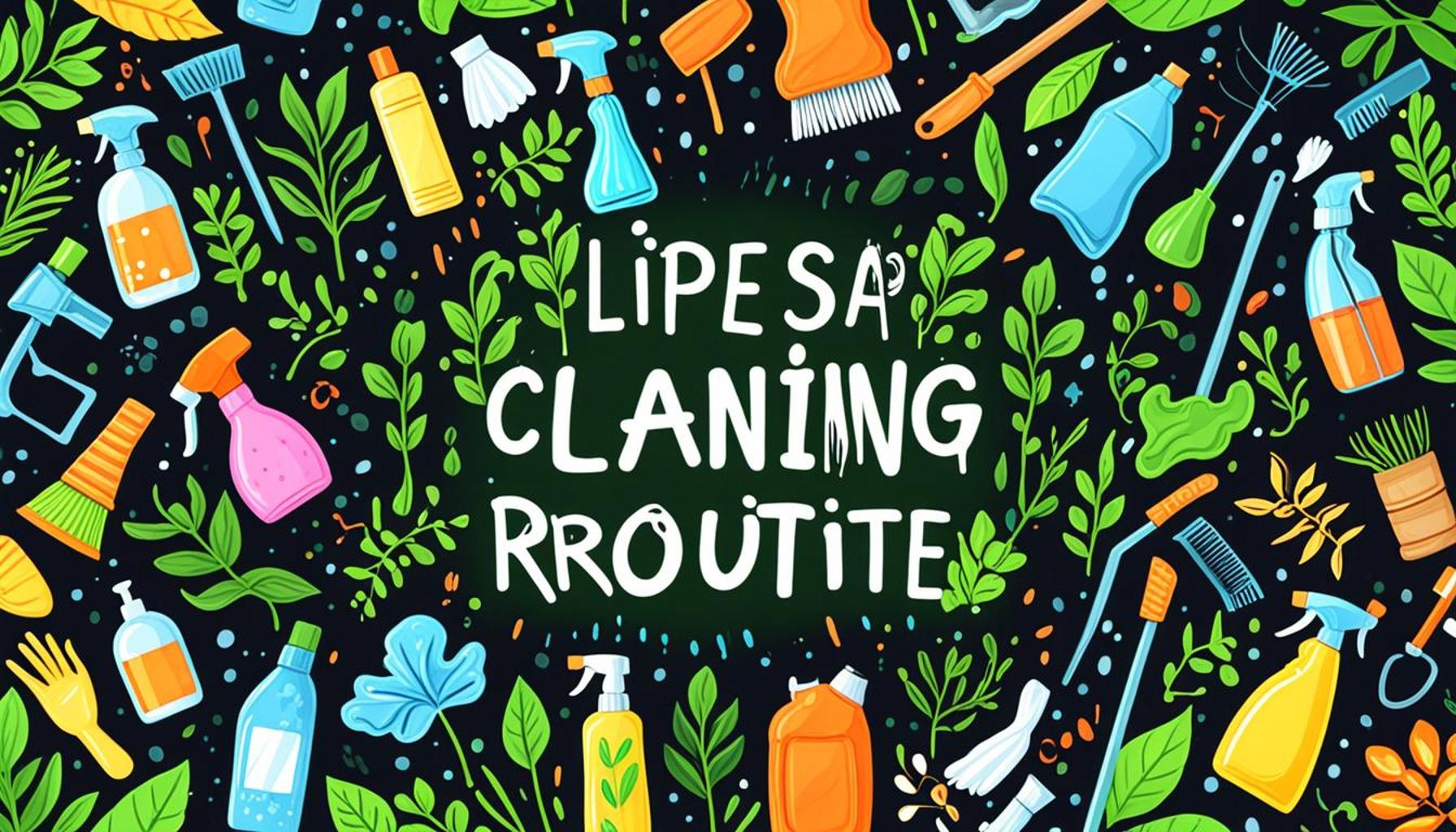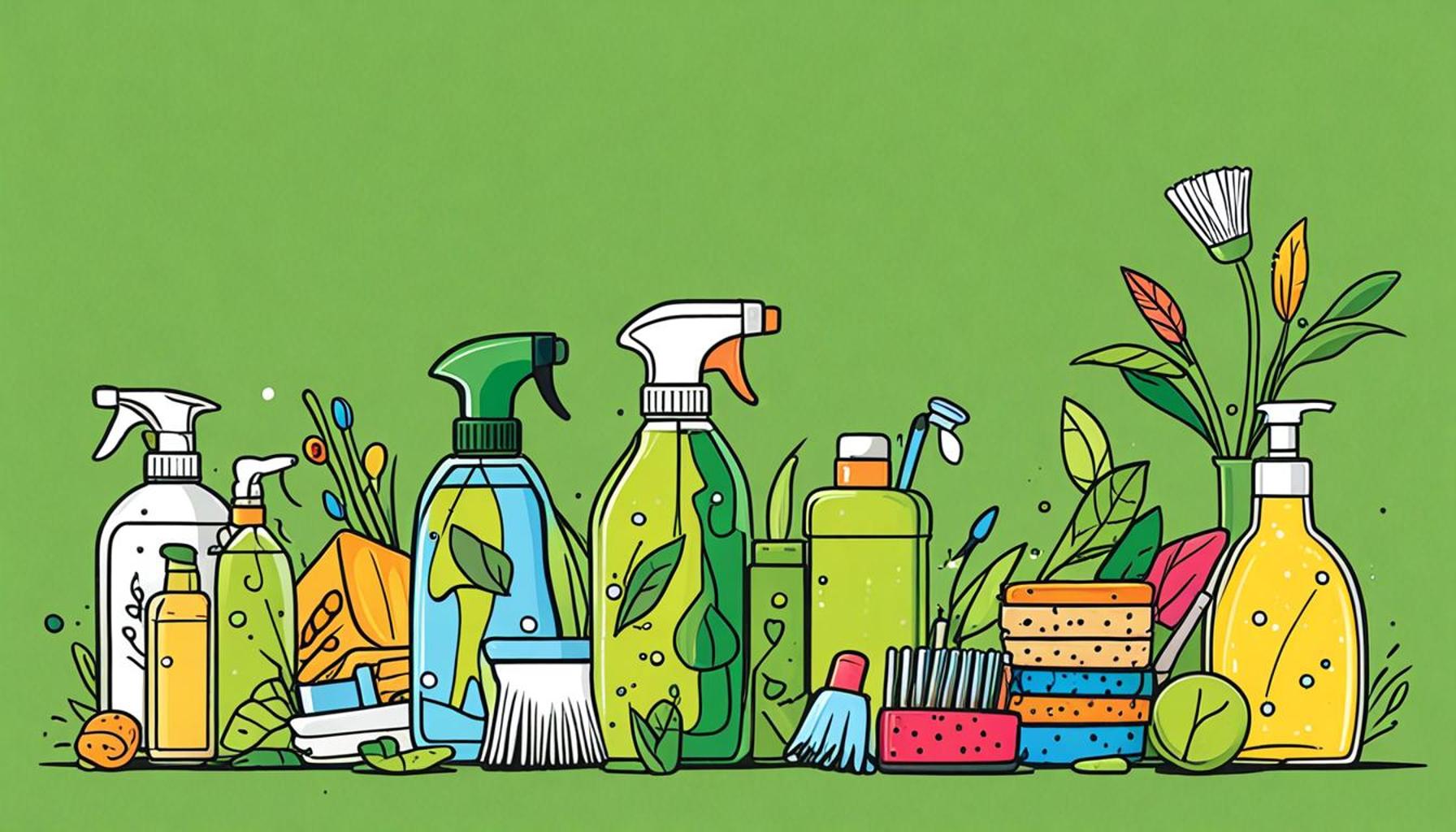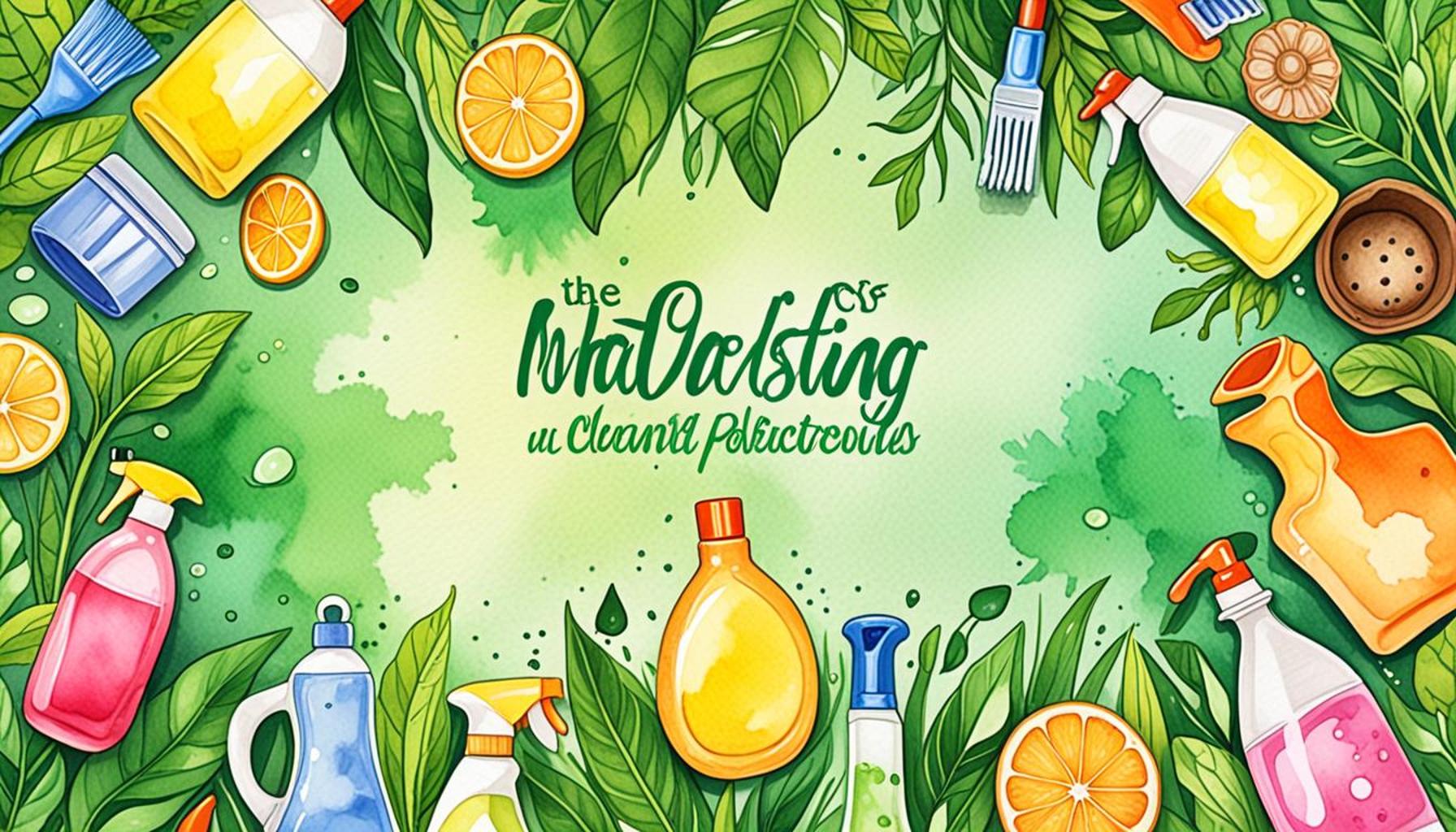Tips for Implementing an Eco-Friendly Cleaning Routine: Practices and Products that Make a Difference

In today’s fast-paced society, many individuals are becoming more conscious of their environmental impact, leading to a surge in the popularity of eco-friendly cleaning routines. By shifting to natural, non-toxic cleaning solutions, you not only create a safer space for yourself and your loved ones but also contribute to conserving our precious planet’s resources. Embracing sustainable practices in your cleaning regimen can significantly lower your ecological footprint and promote healthier living conditions.
Why Go Eco-Friendly?
There are numerous compelling reasons to transition to eco-friendly cleaning, making it an attractive choice for many households:
- Healthier Home: Traditional cleaning products often contain harmful chemicals, such as ammonia and phosphates, which can compromise indoor air quality. Research has shown that prolonged exposure to these substances can lead to respiratory issues and skin irritations. Alternatively, eco-friendly cleaning products typically use safer, biodegradable ingredients that minimize these health risks.
- Sustainable Practices: Choosing eco-friendly options supports manufacturers that prioritize sustainability in their operations, from sourcing renewable materials to minimizing waste. For example, brands like Seventh Generation and Ecover produce cleaners with eco-certifications, ensuring they are both effective and environmentally responsible.
- Cost-Effective: Many eco-friendly cleaning solutions can be easily crafted at home using common household ingredients. For instance, a simple combination of vinegar and water can serve as an excellent window cleaner, while baking soda works wonders as a gentle abrasive for scrubbing surfaces. Not only can this save you money in the long run, but it also reduces the need for buying multiple specialized products.
Key Elements of an Eco-Friendly Routine
To successfully implement an eco-friendly cleaning routine, consider the following essential practices:
- Natural Ingredients: Embrace the cleaning power of natural ingredients like vinegar, baking soda, olive oil, and essential oils. For instance, lemon juice can act as a natural disinfectant and deodorizer, perfect for tackling tough stains or odors in your home.
- Reusable Tools: Invest in reusable cloths, mops, and scrubbers made from sustainable materials. By using washable microfiber cloths instead of paper towels, you not only reduce waste but also enhance your cleaning efficiency, as these cloths trap dirt and grime effectively.
- Conscious Shopping: When purchasing cleaning products, seek out those that are labeled as biodegradable or certified by organizations like the Environmental Protection Agency (EPA) or the Green Seal. Opt for items with minimal or recyclable packaging to further diminish your impact on landfills.
In conclusion, exploring the transformative power of eco-friendly cleaning methods can lead you not only to a cleaner, healthier home but also ignite a greater movement towards environmental responsibility. By making thoughtful choices in your cleaning routine, you contribute to a greener future, inspiring others to join the cause and foster a deeper connection to our planet.
DON’T MISS: Click here for post-event cleaning tips
Essential Practices for Eco-Friendly Cleaning
Implementing an eco-friendly cleaning routine can be both simple and effective. The key to success lies in adopting practices that not only cleanse your home but also enhance sustainability. Here are some essential practices to consider:
- Start Small: Transitioning to an eco-friendly cleaning regimen doesn’t have to be overwhelming. Begin by replacing one or two conventional products with eco-friendly alternatives. As you discover what works best for your household, gradually swap out more products until your entire cleaning arsenal is eco-conscious.
- DIY Cleaning Solutions: One of the most rewarding aspects of eco-friendly cleaning is creating your own cleaning solutions. Simple recipes can be made with ingredients like vinegar, baking soda, and essential oils. For example, combining equal parts of water and vinegar in a spray bottle can effectively clean glass and mirrors without leaving streaks. Adding a few drops of tea tree oil can boost its antibacterial properties, ensuring a clean and fresh-smelling environment.
- Creating a Cleaning Schedule: Establishing a cleaning schedule that includes eco-friendly practices can enhance both efficiency and sustainability in your routine. Designate specific days for different tasks—like dusting with reusable cloths, scrubbing surfaces with baking soda, or sanitizing bathrooms with natural disinfectants. This systematic approach helps you stay organized and ensures that eco-friendly practices become a regular part of your life.
- Mindful Disposal: When using eco-friendly cleaning products, keep disposal methods in mind. Items that are biodegradable can often be composted, while others may be recyclable. Always check product labels for disposal instructions to ensure you are not inadvertently polluting the environment. By adopting responsible disposal methods, you complete the sustainable cleaning cycle.
In addition to these practices, it’s essential to educate yourself about the ingredients you’re using. Many eco-friendly products are transparent about their contents, allowing consumers to make informed decisions. Learning about compounds like surfactants or biodegradable agents can aid in identifying which products are genuinely environmentally friendly.
Eco-Friendly Tools to Add to Your Arsenal
To amplify the effectiveness of your eco-friendly cleaning routine, consider incorporating tools designed with sustainability in mind:
- Microfiber Cloths: Utilizing microfiber cloths can significantly reduce the need for chemical cleaners in your home. Their fibrous structure attracts and traps dirt and dust without requiring harmful substances.
- Natural Scrubbers: Instead of synthetic sponges, opt for natural alternatives made from materials like coconut husk or loofah. These options are biodegradable and provide excellent scrubbing power without scratching surfaces.
- Refillable Cleaning Dispensers: Invest in refillable containers for your eco-friendly cleaning products. This not only minimizes waste but also encourages you to buy larger, more sustainable refills, further reducing your environmental impact.
With a thoughtful approach and careful selection of practices and products, you can craft an eco-friendly cleaning routine that makes a meaningful difference in the health of your home and the planet. Remember, every small step counts towards creating a more sustainable future.
Exploring Eco-Friendly Cleaning Products
When embarking on an eco-friendly cleaning journey, the choice of products plays a pivotal role. Many traditional cleaning supplies contain harmful chemicals that not only jeopardize personal health but also contribute to environmental degradation. In contrast, eco-friendly cleaning products are formulated with non-toxic, biodegradable materials that effectively clean without leaving a harmful footprint.
1. Consider Plant-Based Solutions
One of the most significant benefits of using eco-friendly products is their reliance on natural ingredients. Most plant-based cleaners utilize ingredients like vinegar, baking soda, and essential oils that are both safe and effective. For instance, a mixture of vinegar and water can serve as a potent disinfectant, while essential oils like tea tree oil or lavender provide natural fragrances and have antimicrobial properties.
2. Be Mindful of Packaging
Another aspect to consider is the packaging of the cleaning products you select. Opting for brands that use recycled or biodegradable materials helps reduce the overall waste produced. Many companies now offer products in bulk sizes or refillable containers, allowing consumers to minimize their environmental impact. This practice not only encourages sustainability but also often proves to be cost-effective over time.
3. DIY Cleaning Solutions
Creating your own cleaning supplies at home is an excellent way to control ingredients and reduce waste. Recipes for effective cleaning solutions can often be found online, using simple household items. For instance, a mixture of baking soda and water can create a powerful scrubbing paste for kitchen surfaces. By embracing DIY options, you also avoid the harsh chemicals found in many commercial products.
4. Research Before You Purchase
When choosing products, researching their environmental certifications can guide you to more sustainable options. Look for eco-labels, such as the Green Seal or EPA Safer Choice, which indicate a commitment to reducing environmental impact while maintaining effectiveness.By implementing these practices, you not only contribute to a healthier home but also play a part in fostering a cleaner planet. Experimenting with eco-friendly cleaning routines can be both rewarding and practical, leading to a lifestyle that embraces sustainability and well-being.
LEARN MORE: Click here for expert cleaning techniques
Choosing Eco-Friendly Products Wisely
Equipping your cleaning routine with the right eco-friendly products is just as crucial as adopting sustainable practices. With a plethora of options available, opting for products that deliver exceptional results without harming the environment can significantly elevate your eco-friendly cleaning game. Here are some tips on selecting the right eco-friendly cleaning products:
- Look for Certifications: When shopping for cleaning products, consider those that carry certifications from recognized organizations, such as Green Seal or the Environmental Protection Agency’s Safer Choice. These certifications indicate that the products have met stringent environmental and health standards, ensuring they are effective and safe for both your family and the planet.
- Understand Labels: Take the time to read product labels carefully. Be wary of terms like “natural” or “eco-friendly,” which are sometimes used loosely. Investigate the ingredient list and avoid products with harsh chemicals like phosphates, triclosan, or artificial fragrances. Instead, choose cleaners with simple, recognizable ingredients—often, less truly is more.
- Concentrates Over Ready-to-Use: Consider opting for concentrated cleaning products that require dilution before use. These typically use fewer resources in packaging and transport, meaning a smaller carbon footprint. Plus, they offer greater flexibility regarding the amount you use, allowing you to adjust based on your needs while saving money in the long run.
Moreover, many brands are now expanding their offerings to include eco-friendly products. Look for local companies and artisans who create sustainable cleaning solutions using organic and locally sourced ingredients. Supporting these smaller, community-focused businesses can foster a more sustainable economy while delivering quality products.
The Role of Essential Oils
In eco-friendly cleaning, essential oils can be a game changer, providing not only pleasant fragrances but also natural cleaning properties. Many essential oils possess antibacterial, antiviral, and antifungal capabilities, making them perfect for an eco-friendly cleaning arsenal.
- Tea Tree Oil: Renowned for its powerful antiseptic properties, tea tree oil is effective in combating mold and bacteria. Add a few drops to your homemade cleaning solutions to enhance their disinfecting capabilities.
- Lemon Essential Oil: A natural degreaser and deodorizer, lemon essential oil can cut through tough grime while imparting a fresh, uplifting scent. You can mix it with vinegar and water for a natural all-purpose cleaner.
- Lavender Oil: Apart from its calming scent, lavender oil boasts antibacterial properties, making it an excellent addition to laundry detergents or as a natural air freshener.
As you integrate these oils, be mindful of the potency; a few drops often suffice, allowing you to maximize their benefits while minimizing waste. Not only will your home smell delightful and feel fresh, but you’ll also be taking a step closer to supporting a healthier environment.
Consider Water Usage
While focusing on eco-friendly products and practices, don’t overlook the importance of water conservation. The cleaning process can consume a significant amount of water, especially if not managed carefully. Here are some strategies to minimize water while maintaining effective cleaning:
- Use Damp Cloths: Switching from wet mops to damp cloths or microfiber mops can drastically reduce the water needed for cleaning floors. This method not only cuts down on water usage but also results in less mess, as there’s less water to leave behind.
- Focus on Efficient Rinsing: Try to keep rinsing minimal. For example, in dish cleaning, filling the sink with a small amount of water for rinsing rather than leaving the tap running can save an impressive amount of water.
- Install Water-Saving Devices: Consider using water-saving attachments in your cleaning routines, such as low-flow faucets or shower heads. These fixtures can help minimize water use while still providing adequate pressure for effective cleaning.
Being mindful of your water usage not only contributes to a reduced ecological footprint but also supports your journey to a more sustainable lifestyle.
DIVE DEEPER: Click here for quick cleaning tips
Embrace an Eco-Friendly Cleaning Revolution
Adopting an eco-friendly cleaning routine is not merely a trend; it represents a crucial commitment to both our health and the planet. By reinventing our cleaning habits and selecting sustainable products, we can substantially reduce harmful chemical exposure and minimize our ecological footprint. The journey toward greener cleaning, anchored by careful product selection and responsible water usage, is not just beneficial for your home environment but also for communities and ecosystems on a larger scale.
As you implement these practices, remember that every small change counts. Start by incorporating organic cleaning agents like vinegar and baking soda, and don’t shy away from enriching your routine with natural essential oils that bring both fragrance and beneficial properties. It’s also essential to remain vigilant about the products you purchase; opting for those with green certifications empowers you to make informed decisions that promote sustainability.
Moreover, supporting local businesses that specialize in eco-friendly cleaning solutions enhances community bonding while fostering economic sustainability. Each conscious choice contributes to a larger movement towards environmental stewardship. In a world increasingly burdened by pollution and waste, embracing these eco-friendly cleaning tips not only refreshes our homes but also nurtures the earth. Join the movement towards a cleaner, greener future—your home, family, and planet will thank you.


